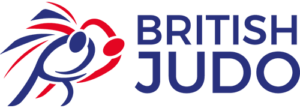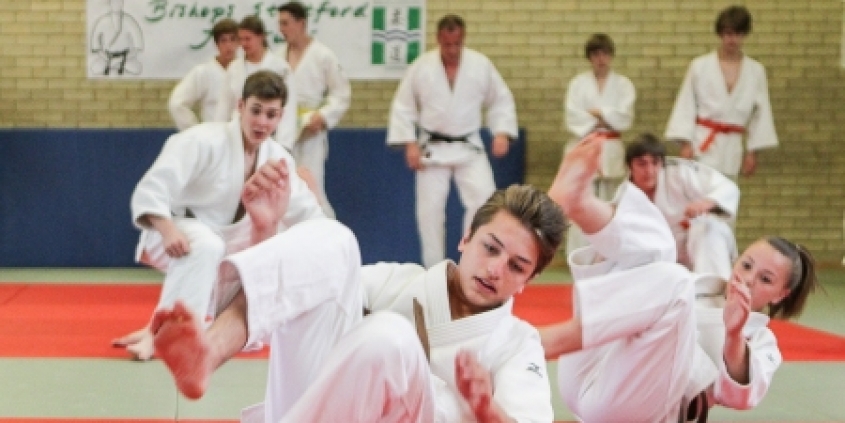Physical Literacy Explained
Recent research has shown a link between physical literacy and long term participation in sport. We sat down with British Judo Lead Strength and Conditioning Coach, Allan Macdonald to find out more about Physical Literacy.
What is Physical Literacy?
Physical literacy can simply be defined as the capacity to perform movement, or a sequence of movements. If we were to look at someone who is physically literate we would see that they can display a wide vocabulary of different movements; that they are confident and efficient with these movements; and most importantly they can find a way to solve a new, novel task by using their movement skills.
From a very basic point of view we can break physical literacy down into basic categories of
- Jumping and landing
- Squatting and squatting on one leg
- Hinging at the hip and hinging on one leg
- Lunging
- Upper body pushing
- Upper body pulling
- Bracing, or resisting, movements
- Loco-motive movements, such as crawling
- Carrying Movements
- Tumbling and rotational movements
Whenever our bodies have to perform a task, we will call upon one, or perhaps several of these movements to complete the task – the more options available to us the more likely we are to complete the task efficiently.
It is also important to understand that there are 3 planes of movement – the Sagittal plane, the Frontal plane and finally the Transverse plane. The Sagittal plane deals with up and down movements such as squatting and movements straight forwards and backwards such as a forward roll. The Frontal plane includes movements moving side to side such as side skipping. Finally, the Transverse plane includes movement rotating about a horizontal axis, such as a tennis forehand swing or a discus thrower.
When looking to developing physical literacy we must train the above movement categories across all 3 planes of movement so that we are stable and strong in as many different positions as possible.
Why is Physical Literacy Important?
For Judo, it is critical that athletes of all abilities continually challenge their physical literacy in new and exciting ways to allow them to evolve their judo skills. For the young Judoka, growing their movement vocabulary utilising as many variations of the above movements as possible is going to give them more movement options to choose from when learning new Judo Techniques, potentially allowing them to learn new throws and refine skills at a quicker rate.
For the more experienced Judoka, challenging their physical literacy using different planes of movement, different speeds of movement and different sequences of movements will allow them to be strong and develop power in all the crazy positions that judo has to offer.
The more movement options an athlete has, the more potential they have to be strong and fast in those positions, and ultimately be successful in throwing for ippon, scoring in ne-waza, or staying robust to train as often as they want to.
How can Physical Literacy be improved?
Physical Literacy is easy to improve and using a little imagination it can be fun too. If we are looking at developing our jumping and landing skills, for example, we can play basketball, volleyball and perhaps join a parkour club. If we are looking at developing tumbling and rotational movements we could practice gymnastics, take up racket sports and even get outside on the golf course.
A really useful tool that we can use when looking at developing physical literacy specifically for judo is a coaching method called “constraints based practice” which has been derived from Dynamic System Theory – a theory which explains how we control our movement. Simply put, constraint based practice allows us to design tasks and games which requires the athlete to discover the desired movement solutions and help us become more physically literate.
The following is an example to improve an athlete’s posture which would be useful for developing skills to dominate kumi-kata. While moving we could place a teddy bear on their head while they move forwards, sideways and spin around; this would require them to keep upright and stay stiff with their trunk. The task could be progressed into completing an obstacle course, maybe over and under hurdles, around cones, climbing over a box and so on to further challenge posture in different planes of movement.
Finally, we could perhaps run a relay race, with the book on the head, around these obstacles to challenge posture at different speeds.
Key Fundamentals of Physical Literacy
The most important thing for us to consider when looking at developing the physical literacy of athletes we support is variation. The more variations of, for example, tumbling skills the athlete can perform then the more options they possess when learning judo skills with rotational components – which is most throws.
Finding new ways to continually challenge and refine skills is a matter of staying creative, using the environment around you and understanding what change you would like to see. If you want the young athlete to improve upper body strength and trunk strength, pull ups will of course improve this, but aren’t fun – whereas climbing trees or rock climbing will offer much more variation, adding to their pulling and trunk skill repertoire.





